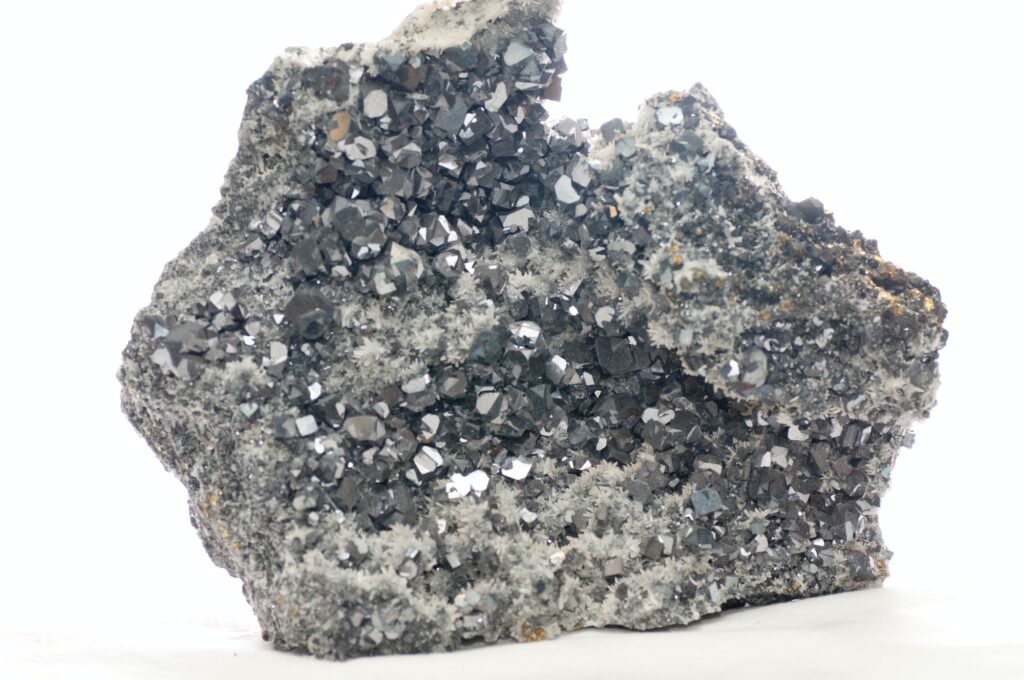COLD-ROLLED COIL PRODUCTS
BENEFITS
At Fabrik, we empower our customers to shape the future. Our Motor Steel is a specialized cold-rolled sheet product meticulously engineered to optimize the performance of electromagnetic core materials in electrical equipment components. These steels are designed to minimize energy losses, ensuring efficient utilization of electrical energy input into motors.
FEATURES
Our motor lamination sheets are meticulously cold-rolled below their recrystallization temperature, offering precise control over product shape, thickness, dimensions, and surface finish. We produce a variety of steel grades, with each grade primarily differentiated by its specific Core Loss requirement. These grades are provided in a semi-processed, unannealed state and must undergo annealing after punching the laminations to unlock their optimal magnetic properties.
BENEFITS
Home appliances are more than an essential part of our homes. They’re an essential part of life. VITRENEMEL Steel optimize the application of porcelain or vitreous enamel coatings and are manufactured with specialized properties that can achieve both good formability and enhanced aesthetics. Our steel products are cold rolled, producing a high quality finished surface to exceed our customers’ requirements.
FEATURES
Fabrik Steel produces three grades of steel that optimize the application of porcelain (or vitreous) enamel coatings that resist fish-scaling during the enameling process, resist carbon boil during enameling, and provide the sag resistance needed during the firing process.
All VITRENEMEL grades typically are furnished with a rough matte finish to improve adhesion of the enamel coating. The approximate surface roughness is 55 to 90 micro-inches. A rougher surface finish, 90 to 150 micro-inches, can be provided if required for a specific application.
The dimensional tolerances for VITRENEMEL Steel Sheet products are the same as those for Cold Rolled Steel Sheet as established by ASTM.
BENEFITS
Cold-rolled full hard unprocessed sheet by Fabrik Steel is the option to choose for applications that require very limited bending and/or roll-forming.Supplied directly from the cold-reduction mill without any annealing to soften the steel, our full hard sheet is highly work-hardened and exhibits a high resistance to denting, with only minimal ductility. The hardness is Rockwell B 84 minimum.
FEATURES
Since the product is supplied directly after cold rolling without further processing, our full hard cold-rolled unprocessed sheet is not subject to the same product standards that have been established for other cold-rolled sheet products.We provide it with a matte or smooth surface finish produced on the cold reduction mill.
Applications & Grades
They are a base material in applications that do not require any formability beyond minimal bending and/or roll-forming.
- Large and Small Electric Motors
- Generators
- Ballasts
- Transformers
Product Brochure and Service Centers
Etymologically, Antimony is derived from the Greek word “anti-monos”, meaning “a metal that does not exist on its own”. The symbol for this metal comes from stibnite, the mineral in which it occurs naturally.
In 3100 BC, minerals containing Antimony were found. During this period, Antimony-containing minerals were used to apply kohl to the eyes, taking advantage of its coloring properties. It was discovered during archaeological excavations in Egypt that a vase dating back to 3000 BC was coated with antimony. A 5000-year-old vase exhibited in the Louvre Museum also contains Antimony. However, the discovery of antimony as a substance dates back to the 16th century.
The first paper on the chemical properties of antimony was published in 1540 by the Italian metallurgist Vannoccio Biringuccio. In 1604, the German monk and alchemist Basil Valentino wrote an alchemical book about its poisonous properties. In 1707, the French chemist Nicolas Lemery published a book containing extensive information on Antimony and its compounds, providing the first scientific description of Antimony. This work is considered an important source for a more detailed study of the chemical properties of Antimony.

